
Seven days
No matter who he called—his mother, his father, his brother, his cousins—the phone would just go to voicemail. Cell service was out around Maui as devastating wildfires swept through the Hawaiian island. But as Raven Imperial kept hoping for someone to answer, he couldn’t keep a terrifying thought from sneaking into his mind: What if his family members had perished in the blaze? What if all of them were gone?
Hours passed; then days. All Raven knew at that point was this: there had been a wildfire on August 8, 2023, in Lahaina, where his multigenerational, tight-knit family lived. But from where he was currently based in Northern California, Raven was in the dark. Had his family evacuated? Were they hurt? He watched from afar as horrifying video clips of Front Street burning circulated online.

The list of missing residents meanwhile climbed into the hundreds.
Raven remembers how frightened he felt: “I thought I had lost them.”
Raven had spent his youth in a four-bedroom, two-bathroom, cream-colored home on Kopili Street that had long housed not just his immediate family but also around 10 to 12 renters, since home prices were so high on Maui. When he and his brother, Raphael Jr., were kids, their dad put up a basketball hoop outside where they’d shoot hoops with neighbors. Raphael Jr.’s high school sweetheart, Christine Mariano, later moved in, and when the couple had a son in 2021, they raised him there too.
From the initial news reports and posts, it seemed as if the fire had destroyed the Imperials’ entire neighborhood near the Pioneer Mill Smokestack—a 225-foot-high structure left over from the days of Maui’s sugar plantations, which Raven’s grandfather had worked on as an immigrant from the Philippines in the mid-1900s.
Then, finally, on August 11, a call to Raven’s brother went through. He’d managed to get a cell signal while standing on the beach.
“Is everyone okay?” Raven asked.
“We’re just trying to find Dad,” Raphael Jr. told his brother.
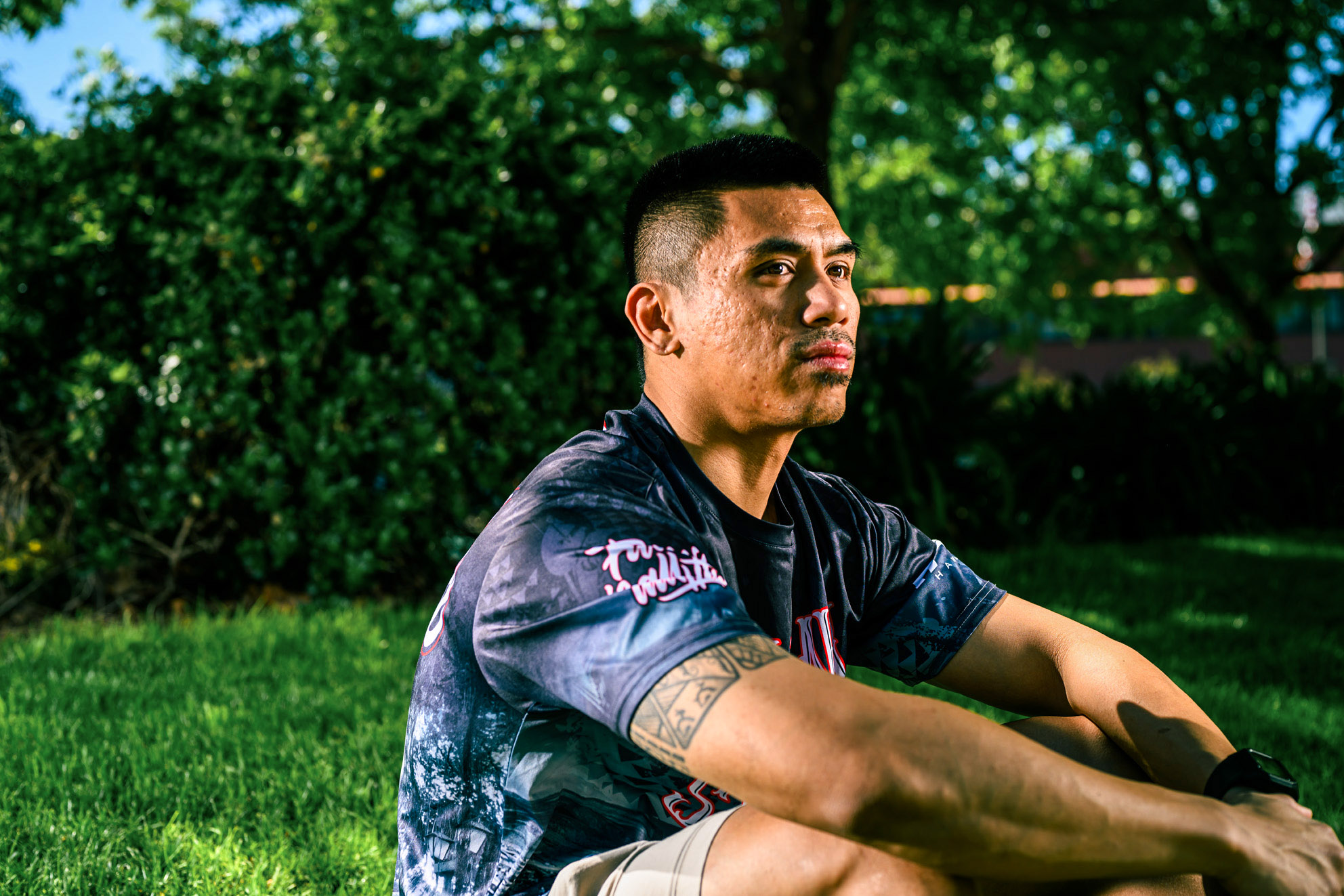
In the three days following the fire, the rest of the family members had slowly found their way back to each other. Raven would learn that most of his immediate family had been separated for 72 hours: Raphael Jr. had been marooned in Kaanapali, 4 miles north of Lahaina; Christine had been stuck in Wailuku, more than 20 miles away; both young parents had been separated from their son, who escaped with Christine’s parents. Raven’s mother, Evelyn, had also been in Kaanapali, though not where Raphael Jr. had been.
But no one was in contact with Rafael Sr. Evelyn had left their home around noon on the day of the fire and headed to work. That was the last time she had seen him. The last time they had spoken was when she called him just after 3 p.m. and asked: “Are you working?” He replied “No,” before the phone abruptly cut off.
“Everybody was found,” Raven says. “Except for my father.”
Within the week, Raven boarded a plane and flew back to Maui. He would keep looking for him, he told himself, for as long as it took.
That same week, Kim Gin was also on a plane to Maui. It would take half a day to get there from Alabama, where she had moved after retiring from the Sacramento County Coroner’s Office in California a year earlier. But Gin, now an independent consultant on death investigations, knew she had something to offer the response teams in Lahaina. Of all the forensic investigators in the country, she was one of the few who had experience in the immediate aftermath of a wildfire on the vast scale of Maui’s. She was also one of the rare investigators well versed in employing rapid DNA analysis—an emerging but increasingly vital scientific tool used to identify victims in unfolding mass-casualty events.
Gin started her career in Sacramento in 2001 and was working as the coroner 17 years later when Butte County, California, close to 90 miles north, erupted in flames. She had worked fire investigations before, but nothing like the Camp Fire, which burned more than 150,000 acres—an area larger than the city of Chicago. The tiny town of Paradise, the epicenter of the blaze, didn’t have the capacity to handle the rising death toll. Gin’s office had a refrigerated box truck and a 52-foot semitrailer, as well as a morgue that could handle a couple of hundred bodies.
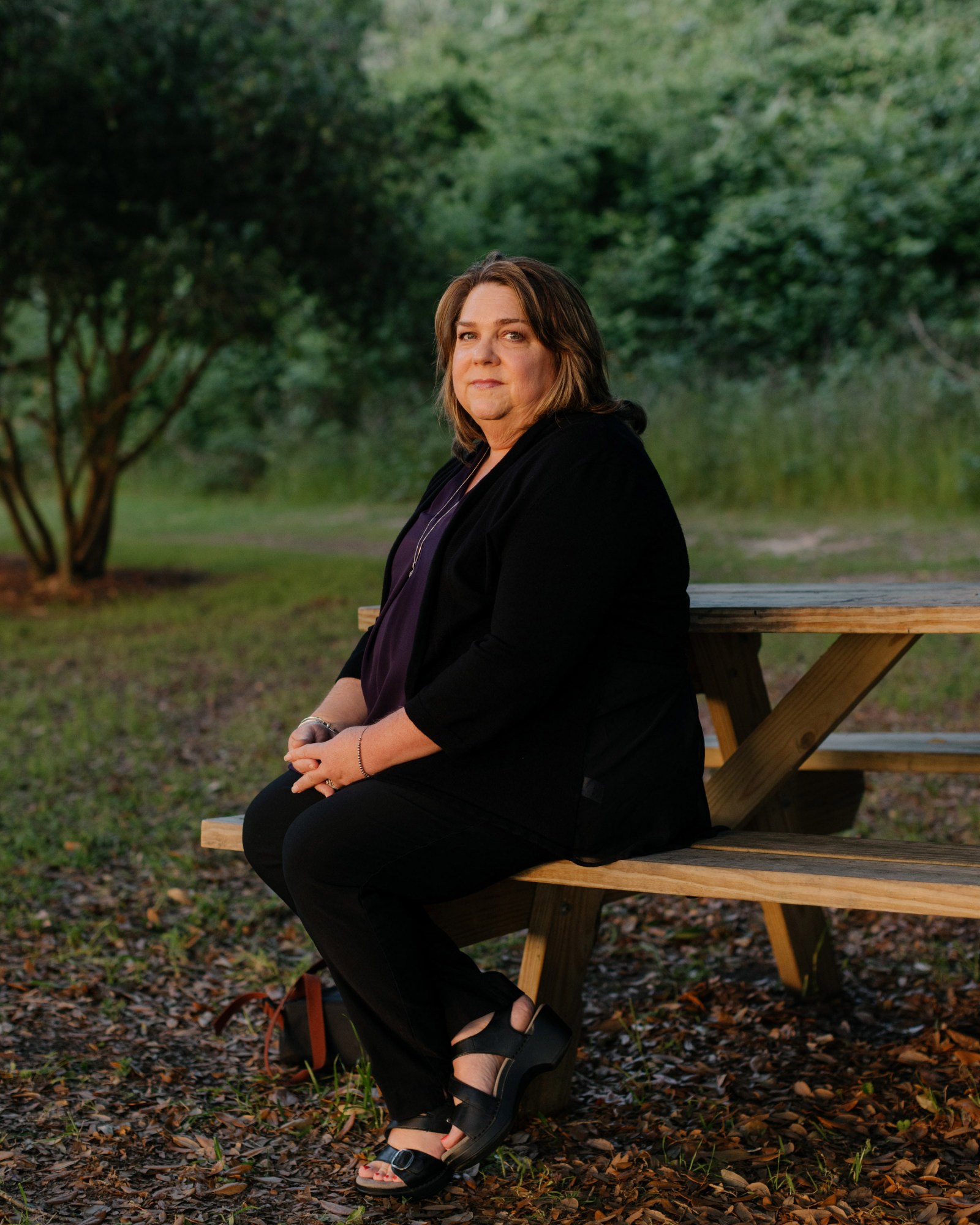
“Even though I knew it was a fire, I expected more identifications by fingerprints or dental [records]. But that was just me being naïve,” she says. She quickly realized that putting names to the dead, many burned beyond recognition, would rely heavily on DNA.
“The problem then became how long it takes to do the traditional DNA [analysis],” Gin explains, speaking to a significant and long-standing challenge in the field—and the reason DNA identification has long been something of a last resort following large-scale disasters.
While more conventional identification methods—think fingerprints, dental information, or matching something like a knee replacement to medical records—can be a long, tedious process, they don’t take nearly as long as traditional DNA testing.
Historically, the process of making genetic identifications would often stretch on for months, even years. In fires and other situations that result in badly degraded bone or tissue, it can become even more challenging and time consuming to process DNA, which traditionally involves reading the 3 billion base pairs of the human genome and comparing samples found in the field against samples from a family member. Meanwhile, investigators frequently need equipment from the US Department of Justice or the county crime lab to test the samples, so backlogs often pile up.
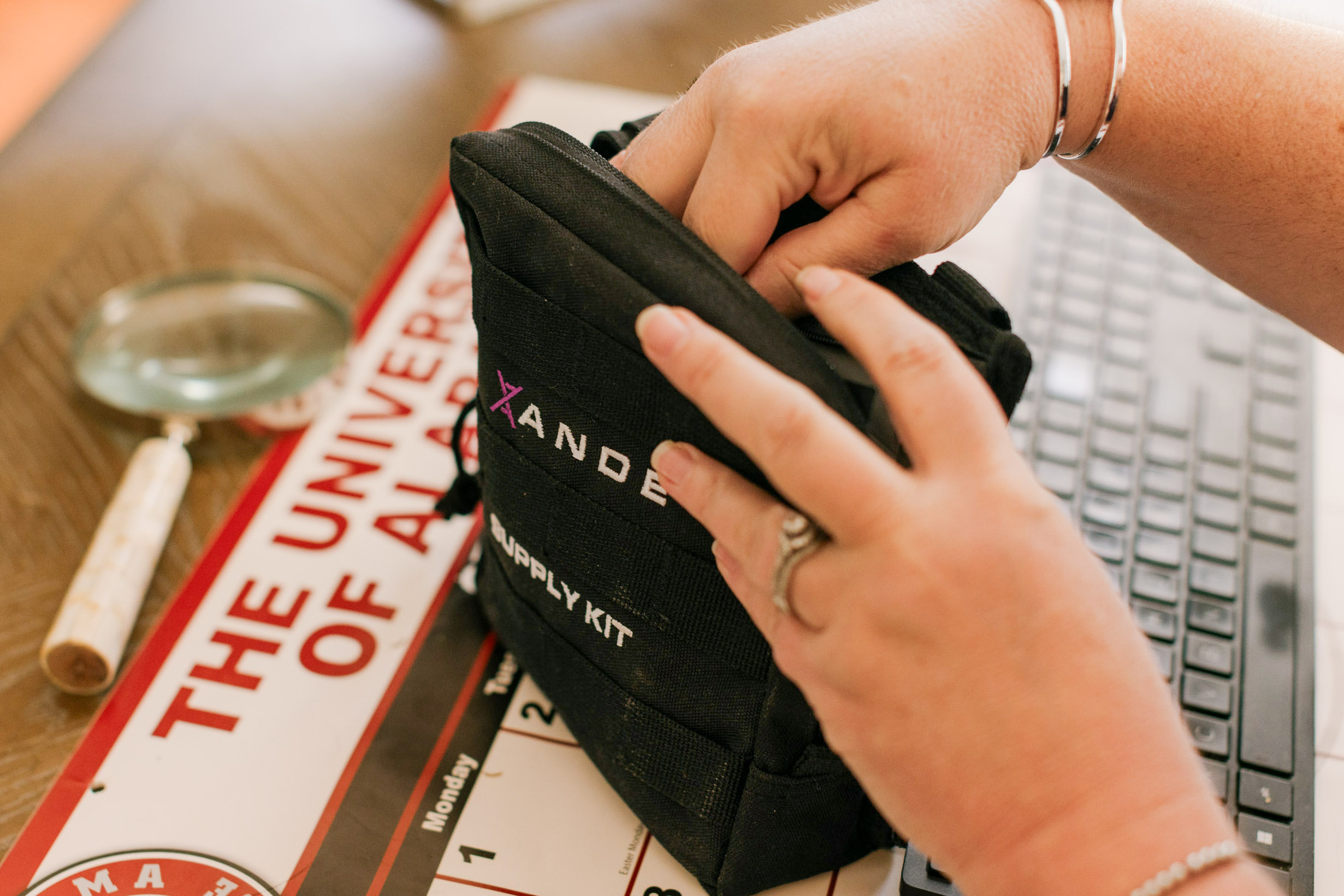

This creates a wait that can be horrendous for family members. Death certificates, federal assistance, insurance money—“all that hinges on that ID,” Gin says. Not to mention the emotional toll of not knowing if their loved ones are alive or dead.
But over the past several years, as fires and other climate-change-fueled disasters have become more common and more cataclysmic, the way their aftermath is processed and their victims identified has been transformed. The grim work following a disaster remains—surveying rubble and ash, distinguishing a piece of plastic from a tiny fragment of bone—but landing a positive identification can now take just a fraction of the time it once did, which may in turn bring families some semblance of peace swifter than ever before.
The key innovation driving this progress has been rapid DNA analysis, a methodology that focuses on just over two dozen regions of the genome. The 2018 Camp Fire was the first time the technology was used in a large, live disaster setting, and the first time it was used as the primary way to identify victims. The technology—deployed in small high-tech field devices developed by companies like industry leader ANDE, or in a lab with other rapid DNA techniques developed by Thermo Fisher—is increasingly being used by the US military on the battlefield, and by the FBI and local police departments after sexual assaults and in instances where confirming an ID is challenging, like cases of missing or murdered Indigenous people or migrants. Yet arguably the most effective way to use rapid DNA is in incidents of mass death. In the Camp Fire, 22 victims were identified using traditional methods, while rapid DNA analysis helped with 62 of the remaining 63 victims; it has also been used in recent years following hurricanes and floods, and in the war in Ukraine.
“These families are going to have to wait a long period of time to get identification. How do we make this go faster?”
Tiffany Roy, a forensic DNA expert with consulting company ForensicAid, says she’d be concerned about the technology being deployed in a crime scene, where quality evidence is limited and can be quickly “exhausted” by well-meaning investigators who are “not trained DNA analysts.” But, on the whole, Roy and other experts see rapid DNA as a major net positive for the field. “It is definitely a game-changer,” adds Sarah Kerrigan, a professor of forensic science at Sam Houston State University and the director of its Institute for Forensic Research, Training, and Innovation.
But back in those early days after the Camp Fire, all Gin knew was that nearly 1,000 people had been listed as missing, and she was tasked with helping to identify the dead. “Oh my goodness,” she remembers thinking. “These families are going to have to wait a long period of time to get identification. How do we make this go faster?”
Ten days
One flier pleading for information about “Uncle Raffy,” as people in the community knew Rafael Sr., was posted on a brick-red stairwell outside Paradise Supermart, a Filipino store and restaurant in Kahului, 25 miles away from the destruction. In it, just below the words “MISSING Lahaina Victim,” the 63-year-old grandfather smiled with closed lips, wearing a blue Hawaiian shirt, his right hand curled in the shaka sign, thumb and pinky pointing out.
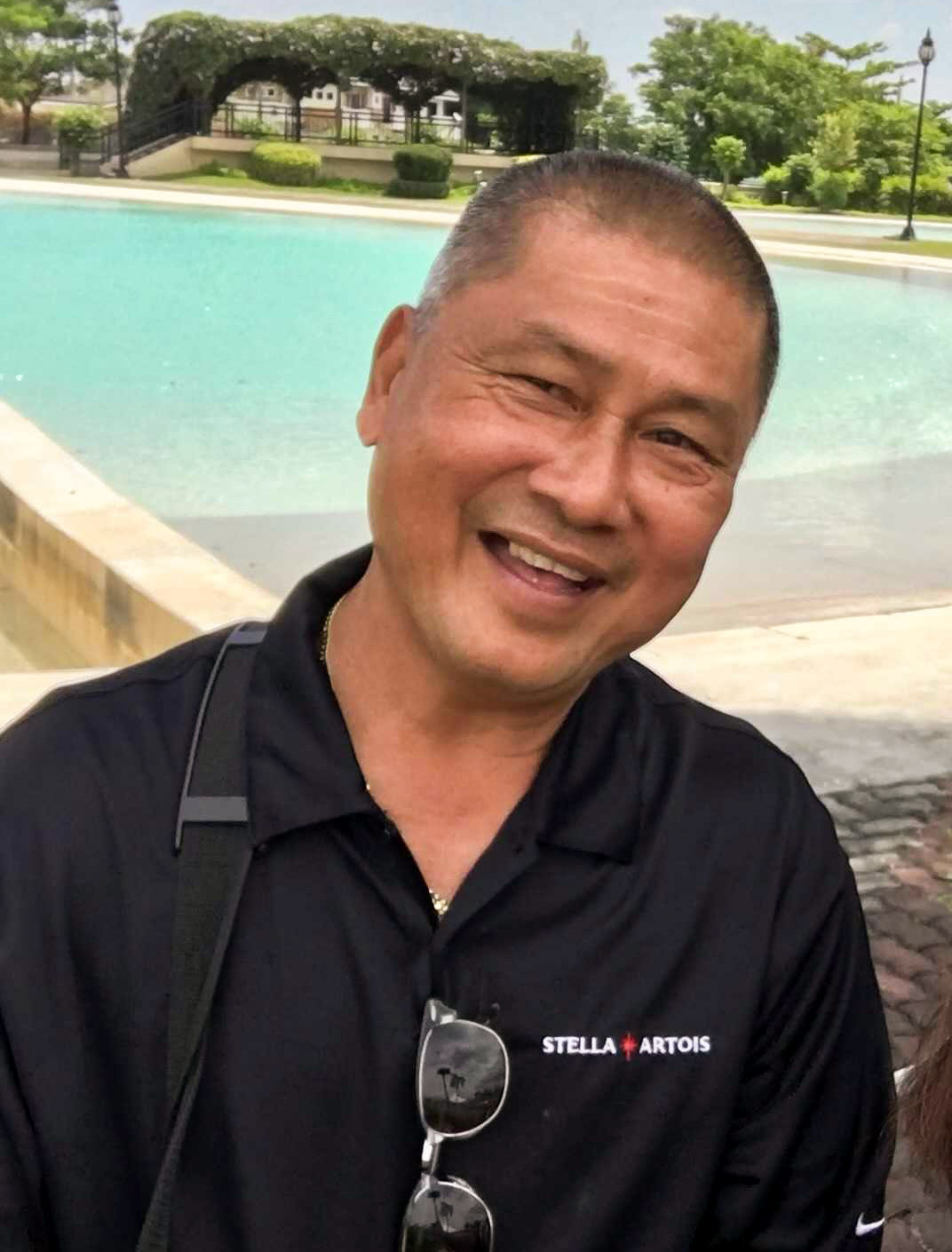
“Everybody knew him from restaurant businesses,” Raven says. “He was all over Lahaina, very friendly to everybody.” Raven remembers how hard his dad worked, juggling three jobs: as a draft tech for Anheuser-Busch, setting up services and delivering beer all across town; as a security officer at Allied Universal security services; and as a parking booth attendant at the Sheraton Maui. He connected with so many people that coworkers, friends, and other locals gave him another nickname: “Mr. Aloha.”
Raven also remembers how his dad had always loved karaoke, where he would sing “My Way,” by Frank Sinatra. “That’s the only song that he would sing,” Raven says. “Like, on repeat.”
Since their home had burned down, the Imperials ran their search out of a rental unit in Kihei, which was owned by a local woman one of them knew through her job. The woman had opened her rental to three families in all. It quickly grew crowded with side-by-side beds and piles of donations.
Each day, Evelyn waited for her husband to call.
She managed to catch up with one of their former tenants, who recalled asking Rafael Sr. to leave the house on the day of the fires. But she did not know if he actually did. Evelyn spoke to other neighbors who also remembered seeing Rafael Sr. that day; they told her that they had seen him go back into the house. But they too did not know what happened to him after.
A friend of Raven’s who got into the largely restricted burn zone told him he’d spotted Rafael Sr.’s Toyota Tacoma on the street, not far from their house. He sent a photo: the pickup was burned out, but a passenger-side door was open. The family wondered: Could he have escaped?
Evelyn called the Red Cross. She called the police. Nothing. They waited and hoped.
Back in Paradise in 2018, as Gin worried about the scores of waiting families, she learned there might in fact be a better way to get a positive ID—and a much quicker one. A company called ANDE Rapid DNA had already volunteered its services to the Butte County sheriff and promised that its technology could process DNA and get a match in less than two hours.
“I’ll try anything at this point,” Gin remembers telling the sheriff. “Let’s see this magic box and what it’s going to do.”
In truth, Gin did not think it would work, and certainly not in two hours. When the device arrived, it was “not something huge and fantastical,” she recalls thinking. A little bigger than a microwave, it looked “like an ordinary box that beeps, and you put stuff in, and out comes a result.”
The “stuff,” more specifically, was a cheek or bloodstain swab, or a piece of muscle, or a fragment of bone that had been crushed and demineralized. Instead of reading 3 billion base pairs in this sample, Selden’s machine examined just 27 genome regions characterized by particular repeating sequences. It would be nearly impossible for two unrelated people to have the same repeating sequence in those regions. But a parent and child, or siblings, would match, meaning you could compare DNA found in human remains with DNA samples taken from potential victims’ family members. Making it even more efficient for a coroner like Gin, the machine could run up to five tests at a time and could be operated by anyone with just a little basic training.
ANDE’s chief scientific officer, Richard Selden, a pediatrician who has a PhD in genetics from Harvard, didn’t come up with the idea to focus on a smaller, more manageable number of base pairs to speed up DNA analysis. But it did become something of an obsession for him after he watched the O.J. Simpson trial in the mid-1990s and began to grasp just how long it took for DNA samples to get processed in crime cases. By this point, the FBI had already set up a system for identifying DNA by looking at just 13 regions of the genome; it would later add seven more. Researchers in other countries had also identified other sets of regions to analyze. Drawing on these various methodologies, Selden homed in on the 27 specific areas of DNA he thought would be most effective to examine, and he launched ANDE in 2004.
But he had to build a device to do the analysis. Selden wanted it to be small, portable, and easily used by anyone in the field. In a conventional lab, he says, “from the moment you take that cheek swab to the moment that you have the answer, there are hundreds of laboratory steps.” Traditionally, a human is holding test tubes and iPads and sorting through or processing paperwork. Selden compares it all to using a “conventional typewriter.” He effectively created the more efficient laptop version of DNA analysis by figuring out how to speed up that same process.
No longer would a human have to “open up this bottle and put [the sample] in a pipette and figure out how much, then move it into a tube here.” It is all automated, and the process is confined to a single device.
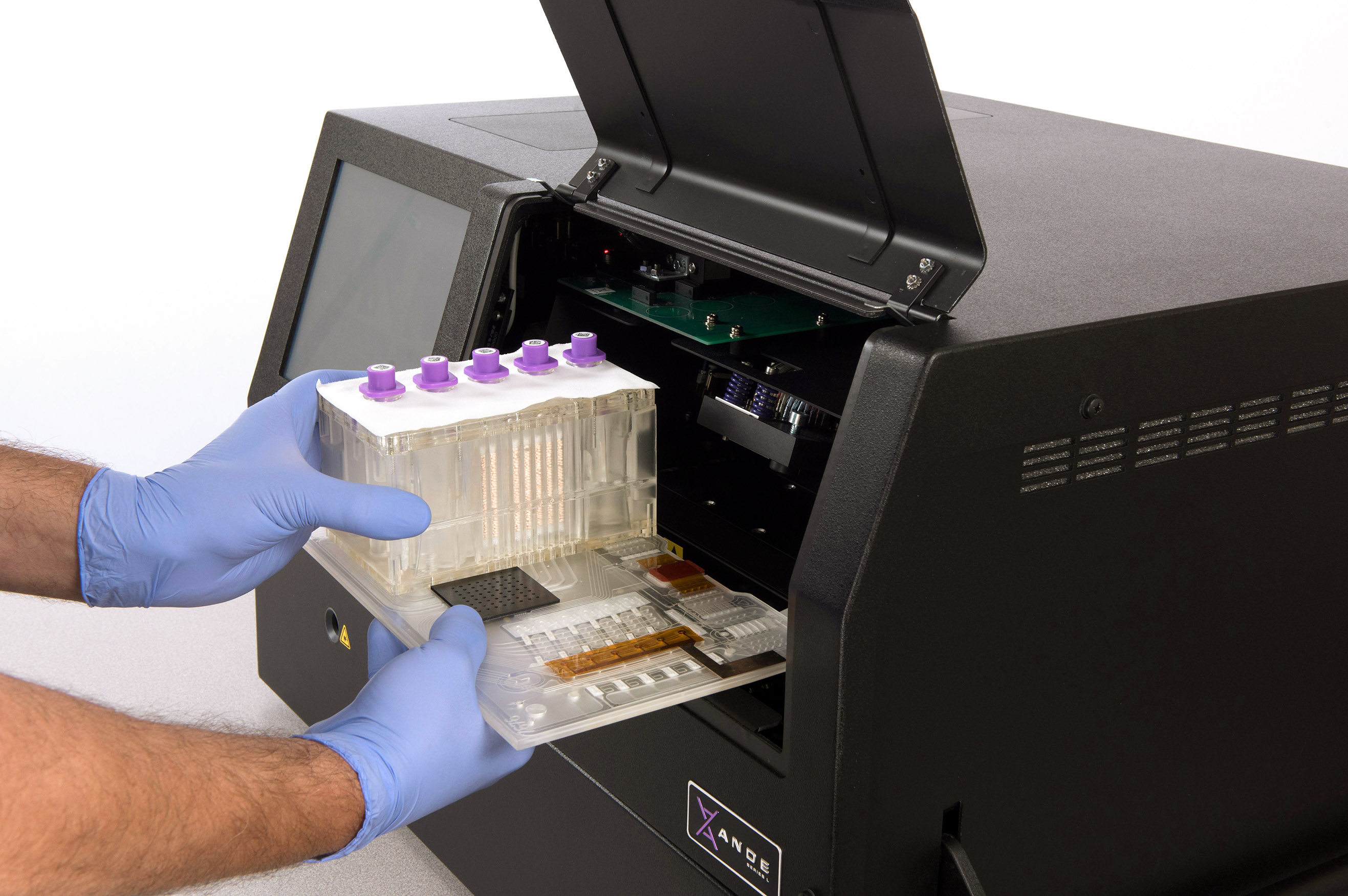
Once a sample is placed in the box, the DNA binds to a filter in water and the rest of the sample is washed away. Air pressure propels the purified DNA to a reconstitution chamber and then flattens it into a sheet less than a millimeter thick, which is subjected to about 6,000 volts of electricity. It’s “kind of an obstacle course for the DNA,” he explains.
The machine then interprets the donor’s genome and and provides an allele table with a graph showing the peaks for each region and their sizes. This data is then compared with samples from potential relatives, and the machine reports when it has a match.
Rapid DNA analysis as a technology first received approval for use by the US military in 2014, and in the FBI two years later. Then the Rapid DNA Act of 2017 enabled all US law enforcement agencies to use the technology on site and in real time as an alternative to sending samples off to labs and waiting for results.
Though by the time of the Camp Fire the following year, most coroners and local police officers still had no familiarity or experience with it. Neither did Gin. So she decided to put the “magic box” through a test: she gave Selden, who had arrived at the scene to help with the technology, a DNA sample from a victim whose identity she’d already confirmed via fingerprint. The box took about 90 minutes to come back with a result. And to Gin’s surprise, it was the same identification she had already made. Just to make sure, she ran several more samples through the box, also from victims she had already identified. Again, results were returned swiftly, and they confirmed hers.
“I was a believer,” she says.
The next year, Gin helped investigators use rapid DNA technology in the 2019 Conception disaster, when a dive boat caught fire off the Channel Islands in Santa Barbara. “We ID’d 34 victims in 10 days,” Gin says. “Completely done.” Gin now works independently to assist other investigators in mass-fatality events and helps them learn to use the ANDE system.
Its speed made the box a groundbreaking innovation. Death investigations, Gin learned long ago, are not as much about the dead as about giving peace of mind, justice, and closure to the living.
Fourteen days
Many of the people who were initially on the Lahaina missing persons list turned up in the days following the fire. Tearful reunions ensued.
Two weeks after the fire, the Imperials hoped they’d have the same outcome as they loaded into a truck to check out some exciting news: someone had reported seeing Rafael Sr. at a local church. He’d been eating and had burns on his hands and looked disoriented. The caller said the sighting had occurred three days after the fire. Could he still be in the vicinity?
When the family arrived, they couldn’t confirm the lead.
“We were getting a lot of calls,” Raven says. “There were a lot of rumors saying that they found him.”
None of them panned out. They kept looking.
The scenes following large-scale, destructive events like the fires in Paradise and Lahaina can be sprawling and dangerous, with victims sometimes dispersed across a large swath of land if many people died trying to escape. Teams need to meticulously and tediously search mountains of mixed, melted, or burned debris just to find a bit of human remains that might otherwise be mistaken for a piece of plastic or drywall. Compounding the challenge is the comingling of remains—from people who died huddled together, or in the same location, or alongside pets or other animals.
This is when the work of forensic anthropologists is essential: they have the skills to differentiate between human and animal bones and to find the critical samples that are needed by DNA specialists, fire and arson investigators, forensic pathologists and dentists, and other experts. Rapid DNA analysis “works best in tandem with forensic anthropologists, particularly in wildfires,” Gin explains.
“The first step is determining, is it a bone?” says Robert Mann, a forensic anthropologist at the University of Hawaii John A. Burns School of Medicine on Oahu. Then, is it a human bone? And if so, which one?
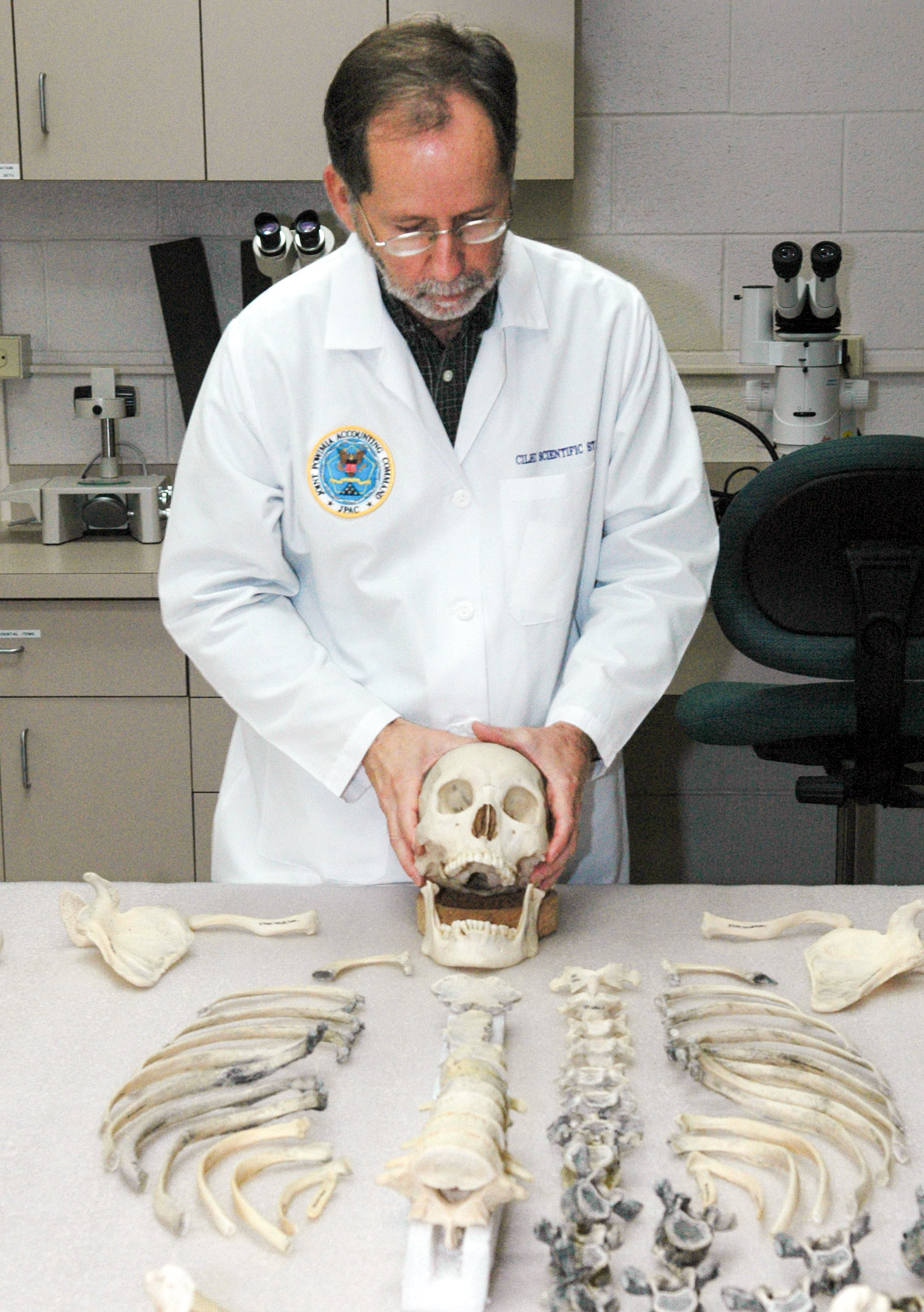
Mann has served on teams that have helped identify the remains of victims after the terrorist attacks of September 11, 2001, and the 2004 Indian Ocean tsunami, among other mass-casualty events. He remembers how in one investigation he received an object believed to be a human bone; it turned out to be a plastic replica. In another case, he was looking through the wreckage of a car accident and spotted what appeared to be a human rib fragment. Upon closer examination, he identified it as a piece of rubber weather stripping from the rear window. “We examine every bone and tooth, no matter how small, fragmented, or burned it might be,” he says. “It’s a time-consuming but critical process because we can’t afford to make a mistake or overlook anything that might help us establish the identity of a person.”
For Mann, the Maui disaster felt particularly immediate. It was right near his home. He was deployed to Lahaina about a week after the fire, as one of more than a dozen forensic anthropologists on scene from universities in places including Oregon, California, and Hawaii.
While some anthropologists searched the recovery zone—looking through what was left of homes, cars, buildings, and streets, and preserving fragmented and burned bone, body parts, and teeth—Mann was stationed in the morgue, where samples were sent for processing.
It used to be much harder to find samples that scientists believed could provide DNA for analysis, but that’s also changed recently as researchers have learned more about what kind of DNA can survive disasters. Two kinds are used in forensic identity testing: nuclear DNA (found within the nuclei of eukaryotic cells) and mitochondrial DNA (found in the mitochondria, organelles located outside the nucleus). Both, it turns out, have survived plane crashes, wars, floods, volcanic eruptions, and fires.
Theories have also been evolving over the past few decades about how to preserve and recover DNA specifically after intense heat exposure. One 2018 study found that a majority of the samples actually survived high heat. Researchers are also learning more about how bone characteristics change depending on the degree. “Different temperatures and how long a body or bone has been exposed to high temperatures affect the likelihood that it will or will not yield usable DNA,” Mann says.
Typically, forensic anthropologists help select which bone or tooth to use for DNA testing, says Mann. Until recently, he explains, scientists believed “you cannot get usable DNA out of burned bone.” But thanks to these new developments, researchers are realizing that with some bone that has been charred, “they’re able to get usable, good DNA out of it,” Mann says. “And that’s new.” Indeed, Selden explains that “in a typical bad fire, what I would expect is 80% to 90% of the samples are going to have enough intact DNA” to get a result from rapid analysis. The rest, he says, may require deeper sequencing.

Anthropologists can often tell “simply by looking” if a sample will be good enough to help create an ID. If it’s been burned and blackened, “it might be a good candidate for DNA testing,” Mann says. But if it’s calcined (white and “china-like”), he says, the DNA has probably been destroyed.
On Maui, Mann adds, rapid DNA analysis made the entire process more efficient, with tests coming back in just two hours. “That means while you’re doing the examination of this individual right here on the table, you may be able to get results back on who this person is,” he says. From inside the lab, he watched the science unfold as the number of missing on Maui quickly began to go down.
Within three days, 42 people’s remains were recovered inside Maui homes or buildings and another 39 outside, along with 15 inside vehicles and one in the water. The first confirmed identification of a victim on the island occurred four days after the fire—this one via fingerprint. The ANDE rapid DNA team arrived two days after the fire and deployed four boxes to analyze multiple samples of DNA simultaneously. The first rapid DNA identification happened within that first week.
Sixteen days
More than two weeks after the fire, the list of missing and unaccounted-for individuals was dwindling, but it still had 388 people on it. Rafael Sr. was one of them.
Raven and Raphael Jr. raced to another location: Cupies café in Kahului, more than 20 miles from Lahaina. Someone had reported seeing him there.
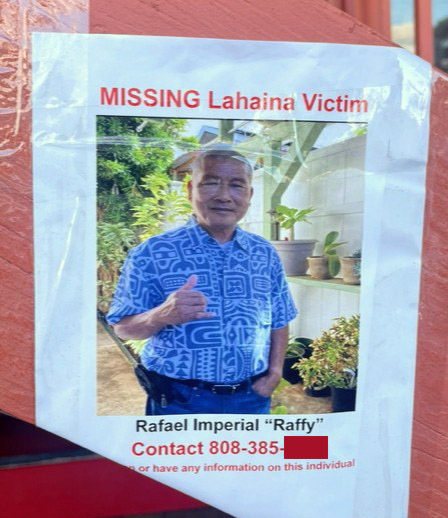
The tip was another false lead.
As family and friends continued to search, they stopped by support hubs that had sprouted up around the island, receiving information about Red Cross and FEMA assistance or donation programs as volunteers distributed meals and clothes. These hubs also sometimes offered DNA testing.
Raven still had a “50-50” feeling that his dad might be out there somewhere. But he was beginning to lose some of that hope.
Gin was stationed at one of the support hubs, which offered food, shelter, clothes, and support. “You could also go in and give biological samples,” she says. “We actually moved one of the rapid DNA instruments into the family assistance center, and we were running the family samples there.” Eliminating the need to transport samples from a site to a testing center further cut down any lag time.
Selden had once believed that the biggest hurdle for his technology would be building the actual device, which took about eight years to design and another four years to perfect. But at least in Lahaina, it was something else: persuading distraught and traumatized family members to offer samples for the test.
Nationally, there are serious privacy concerns when it comes to rapid DNA technology. Organizations like the ACLU warn that as police departments and governments begin deploying it more often, there must be more oversight, monitoring, and training in place to ensure that it is always used responsibly, even if that adds some time and expense. But the space is still largely unregulated, and the ACLU fears it could give rise to rogue DNA databases “with far fewer quality, privacy, and security controls than federal databases.”
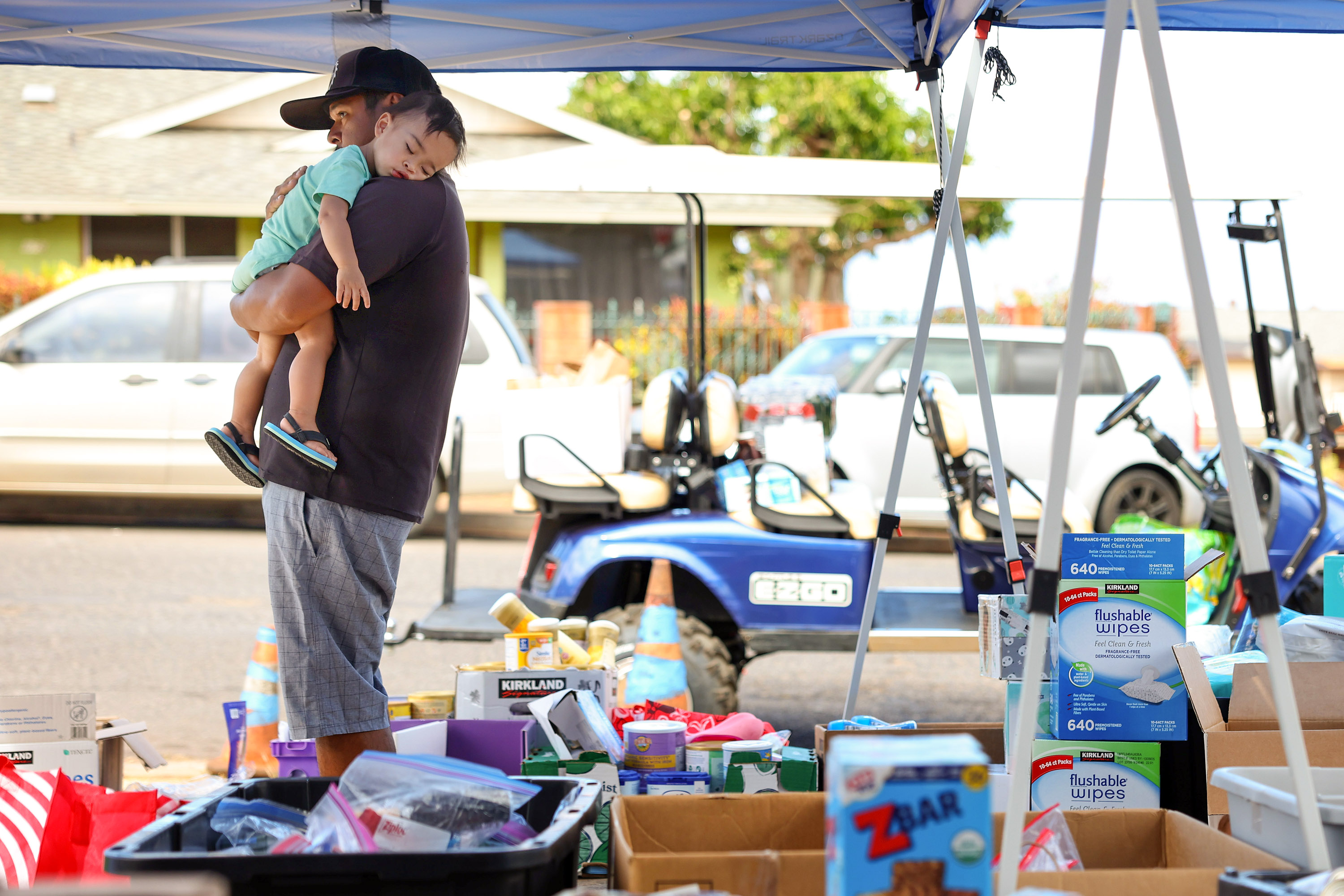

Family support centers popped up around Maui to offer clothing, food, and other assistance, and sometimes to take DNA samples to help find missing family members.
In a place like Hawaii, these fears are even more palpable. The islands have a long history of US colonialism, military dominance, and exploitation of the Native population and of the large immigrant working-class population employed in the tourism industry.
Native Hawaiians in particular have a fraught relationship with DNA testing. Under a US law signed in 1921, thousands have a right to live on 200,000 designated acres of land trust, almost for free. It was a kind of reparations measure put in place to assist Native Hawaiians whose land had been stolen. Back in 1893, a small group of American sugar plantation owners and descendants of Christian missionaries, backed by US Marines, held Hawaii’s Queen Lili‘uokalani in her palace at gunpoint and forced her to sign over 1.8 million acres to the US, which ultimately seized the islands in 1898.
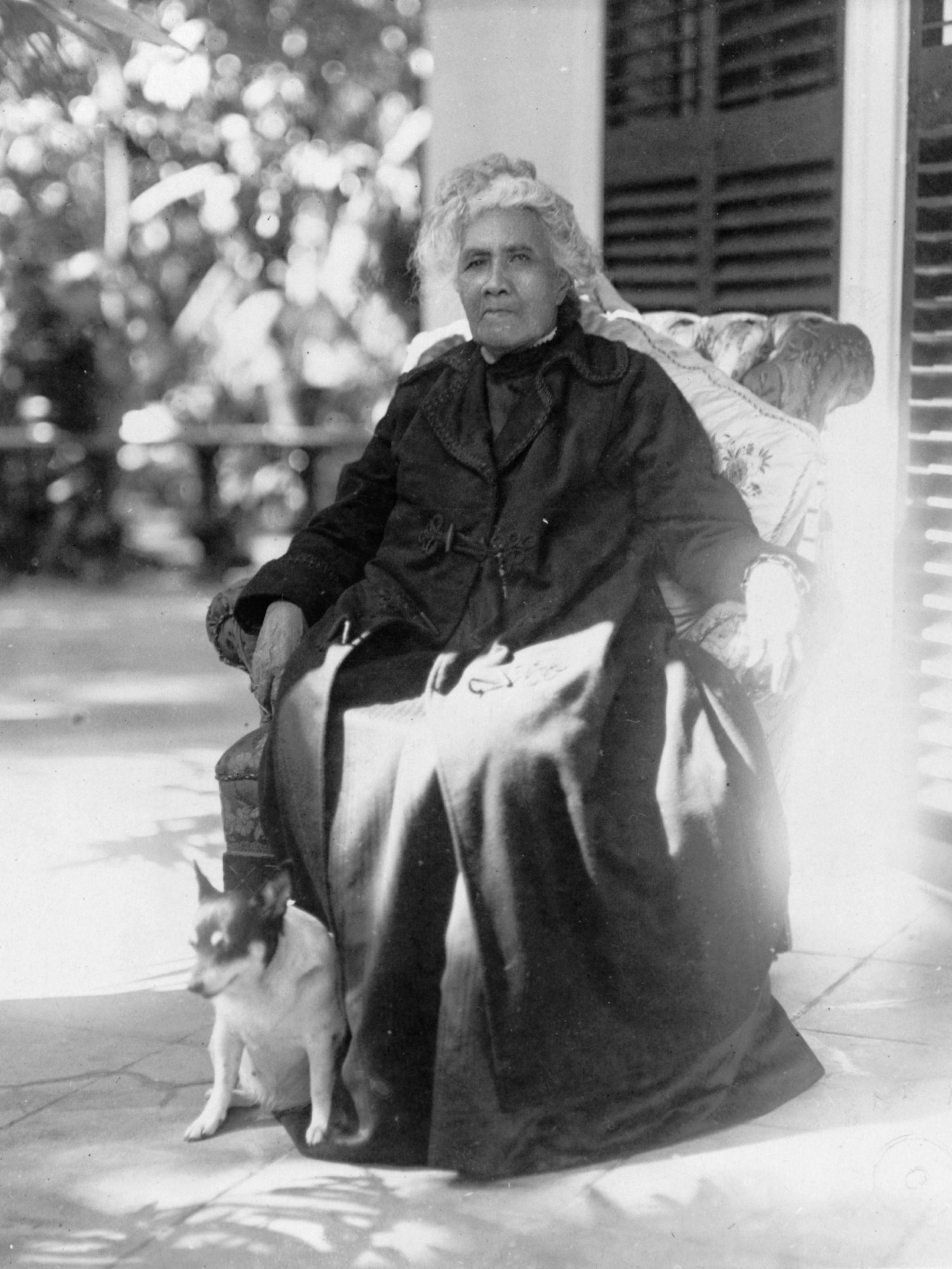
To lay their claim to the designated land and property, individuals first must prove via DNA tests how much Hawaiian blood they have. But many residents who have submitted their DNA and qualified for the land have died on waiting lists before ever receiving it. Today, Native Hawaiians are struggling to stay on the islands amid skyrocketing housing prices, while others have been forced to move away.
Meanwhile, after the fires, Filipino families faced particularly stark barriers to getting information about financial support, government assistance, housing, and DNA testing. Filipinos make up about 25% of Hawaii’s population and 40% of its workers in the tourism industry. They also make up 46% of undocumented residents in Hawaii—more than any other group. Some encountered language barriers, since they primarily spoke Tagalog or Ilocano. Some worried that people would try to take over their burned land and develop it for themselves. For many, being asked for DNA samples only added to the confusion and suspicion.
Selden says he hears the overall concerns about DNA testing: “If you ask people about DNA in general, they think of Brave New World and [fear] the information is going to be used to somehow harm or control people.” But just like regular DNA analysis, he explains, rapid DNA analysis “has no information on the person’s appearance, their ethnicity, their health, their behavior either in the past, present, or future.” He describes it as a more accurate fingerprint.
Gin tried to help the Lahaina family members understand that their DNA “isn’t going to go anywhere else.” She told them their sample would ultimately be destroyed, something programmed to occur inside ANDE’s machine. (Selden says the boxes were designed to do this for privacy purposes.) But sometimes, Gin realizes, these promises are not enough.
“You still have a large population of people that, in my experience, don’t want to give up their DNA to a government entity,” she says. “They just don’t.”
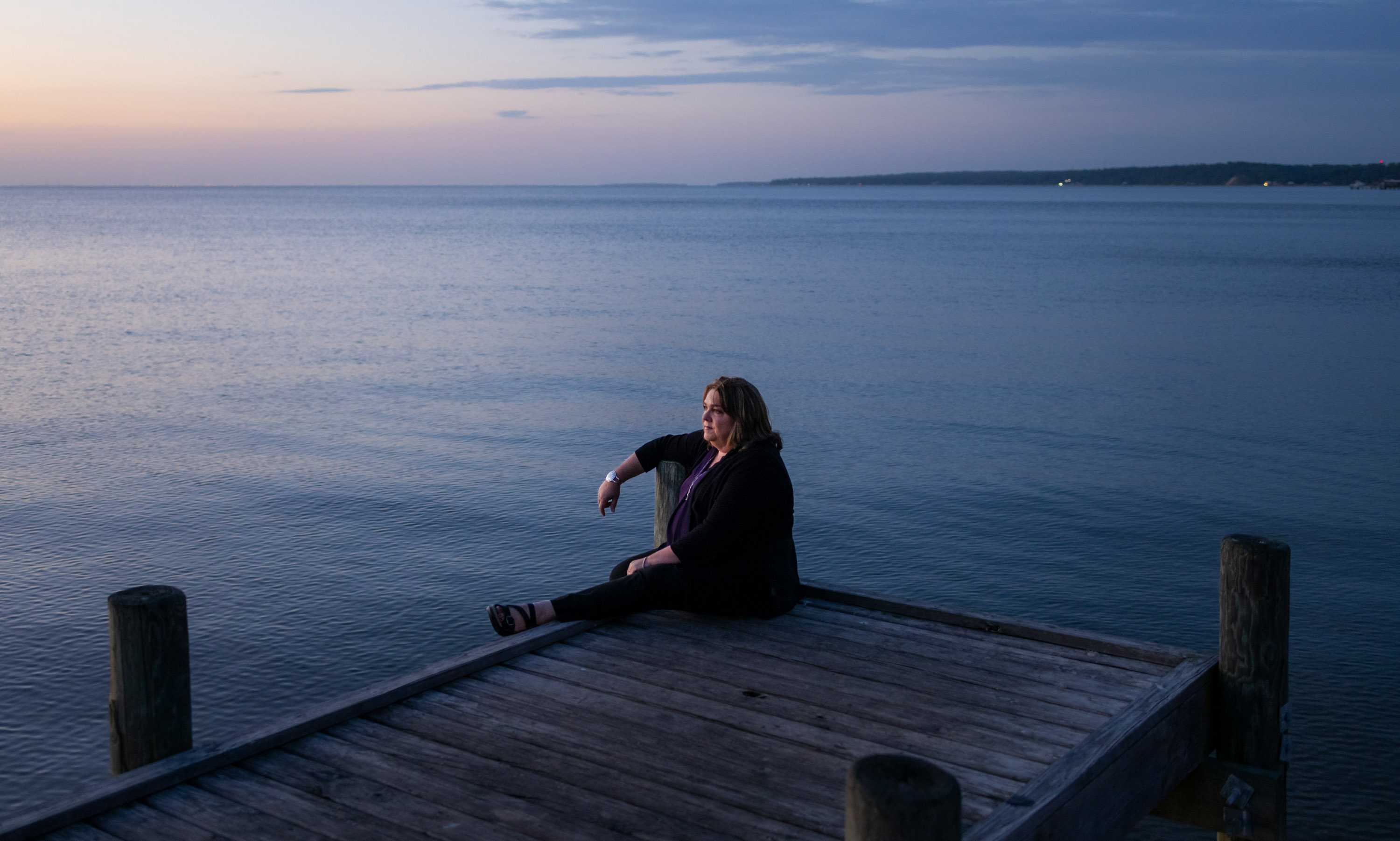
The immediate aftermath of a disaster, when people are suffering from shock, PTSD, and displacement, is the worst possible moment to try to educate them about DNA tests and explain the technology and privacy policies. “A lot of them don’t have anything,” Gin says. “They’re just wondering where they’re going to lay their heads down, and how they’re going to get food and shelter and transportation.”
Unfortunately, Lahaina’s survivors won’t be the last people in this position. Particularly given the world’s current climate trajectory, the risk of deadly events in just about every neighborhood and community will rise. And figuring out who survived and who didn’t will be increasingly difficult. Mann recalls his work on the Indian Ocean tsunami, when over 227,000 people died. “The bodies would float off, and they ended up 100 miles away,” he says. Investigators were at times left with remains that had been consumed by sea creatures or degraded by water and weather. He remembers how they struggled to determine: “Who is the person?”
Mann has spent his own career identifying people including “missing soldiers, sailors, airmen, Marines, from all past wars,” as well as people who have died recently. That closure is meaningful for family members, some of them decades, or even lifetimes, removed.
In the end, distrust and conspiracy theories did in fact hinder DNA-identification efforts on Maui, according to a police department report.
33 days
By the time Raven went to a family resource center to submit a swab, some four weeks had gone by. He remembers the quick rub inside his cheek.
Some of his family had already offered their own samples before Raven provided his. For them, waiting wasn’t an issue of mistrusting the testing as much as experiencing confusion and chaos in the weeks after the fire. They believed Uncle Raffy was still alive, and they still held hope of finding him. Offering DNA was a final step in their search.
“I did it for my mom,” Raven says. She still wanted to believe he was alive, but Raven says: “I just had this feeling.” His father, he told himself, must be gone.
Just a day after he gave his sample—on September 11, more than a month after the fire—he was at the temporary house in Kihei when he got the call: “It was,” Raven says, “an automatic match.”
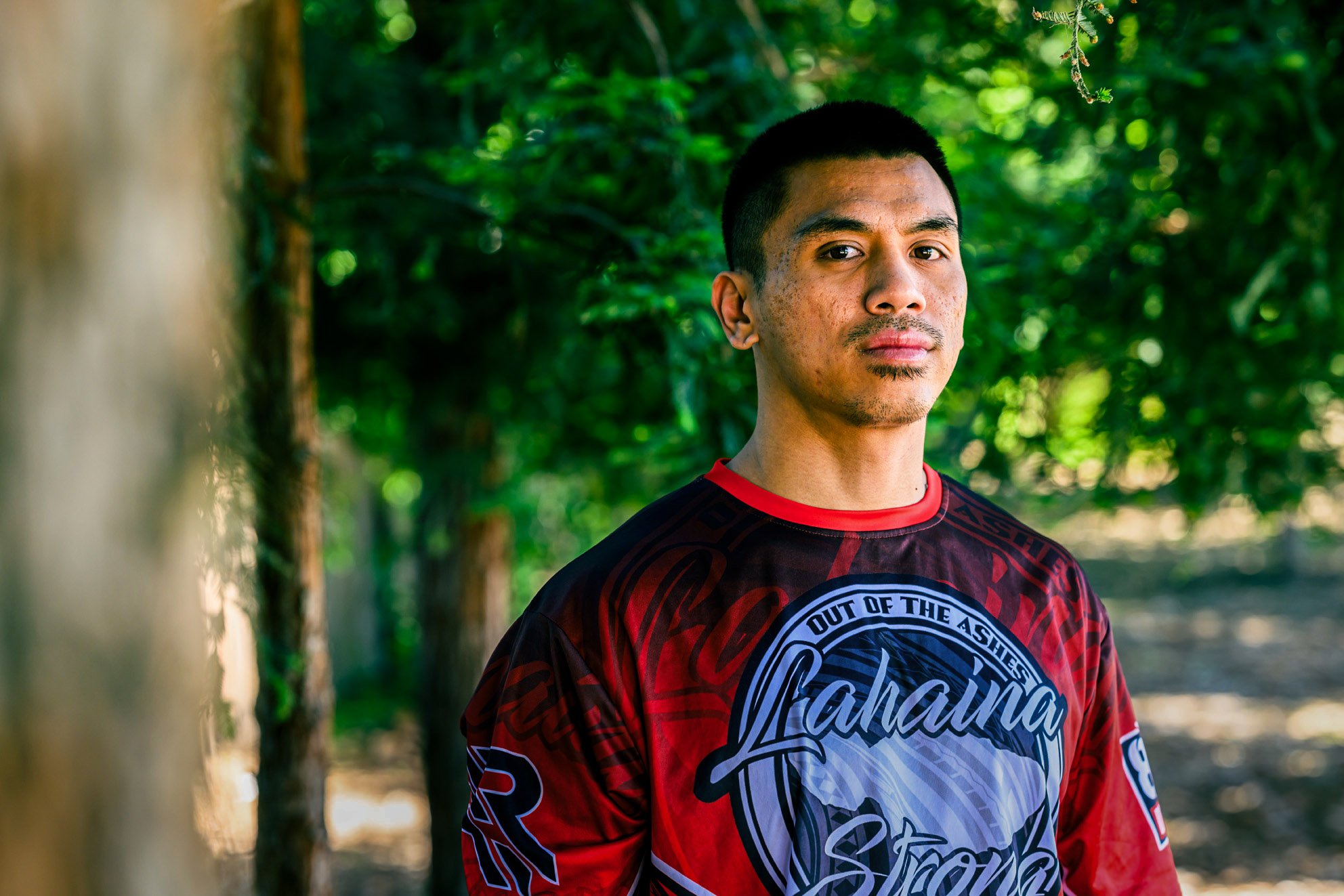
The investigators let the family know the address where the remains of Rafael Sr. had been found, several blocks away from their home. They put it into Google Maps and realized it was where some family friends lived. The mother and son of that family had been listed as missing too. Rafael Sr., it seemed, had been with or near them in the end.
By October, investigators in Lahaina had obtained and analyzed 215 DNA samples from family members of the missing. By December, DNA analysis had confirmed the identities of 63 of the most recent count of 101 victims. Seventeen more had been identified by fingerprint, 14 via dental records, and two through medical devices, along with three who died in the hospital. While some of the most damaged remains would still be undergoing DNA testing months after the fires, it’s a drastic improvement over the identification processes for 9/11 victims, for instance—today, over 20 years later, some are still being identified by DNA.
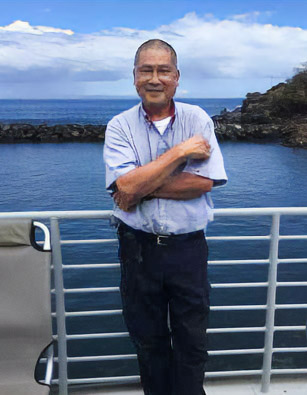
Rafael Sr. was born on October 22, 1959, in Naga City, the Philippines. The family held his funeral on his birthday last year. His relatives flew in from Michigan, the Philippines, and California.
Raven says in those weeks of waiting—after all the false tips, the searches, the prayers, the glimmers of hope—deep down the family had already known he was gone. But for Evelyn, Raphael Jr., and the rest of their family, DNA tests were necessary—and, ultimately, a relief, Raven says. “They just needed that closure.”
Erika Hayasaki is an independent journalist based in Southern California.
Comments
Post a Comment